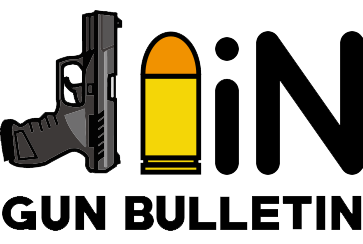Without a doubt, the Luger is one of the most iconic and recognizable firearms in existence.
Unique from an operations standpoint, this pistol served as the primary military issue sidearm of Germany, Switzerland, and other countries for close to a half-century.
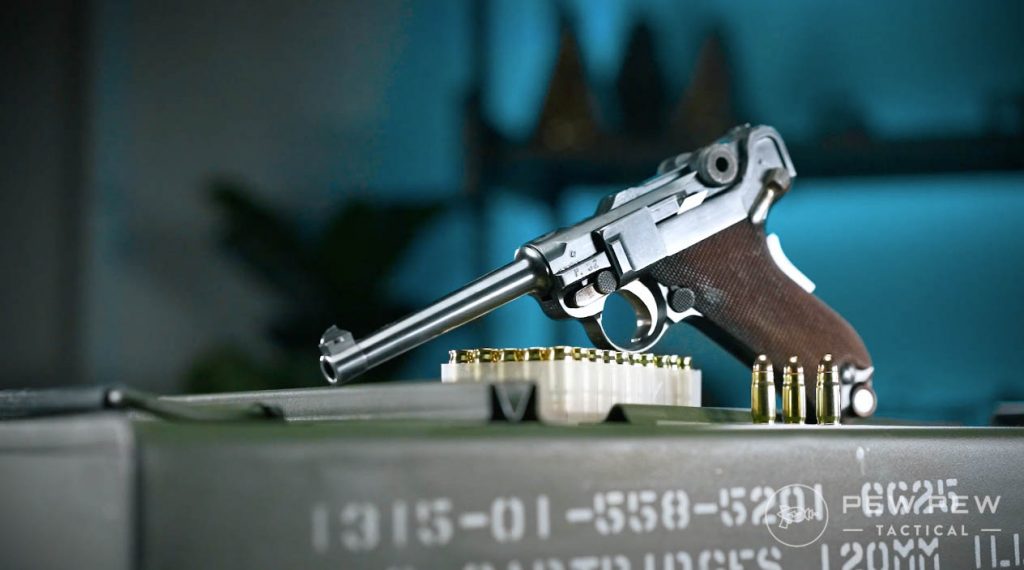
And today, we’re taking a closer look at this famous handgun. We got our hands on a Swiss Luger 1906 and put it to the test at our desert range.
So, follow along as we look at the history behind the Luger and the standout features that made it an icon.
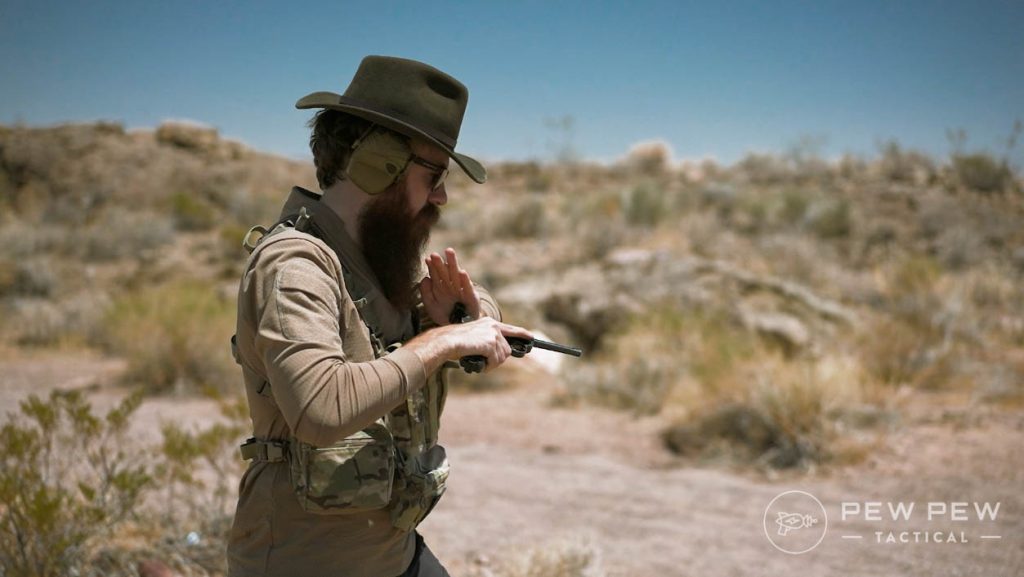
If you want to see it in action, be sure to check out the full video review below.
As always, take a look at Pew Pew Tactical on YouTube for even more guns and gear.
Table of Contents
Loading…
History of the Luger
As we mentioned earlier, the Luger is a pretty famous and instantly recognizable pistol.
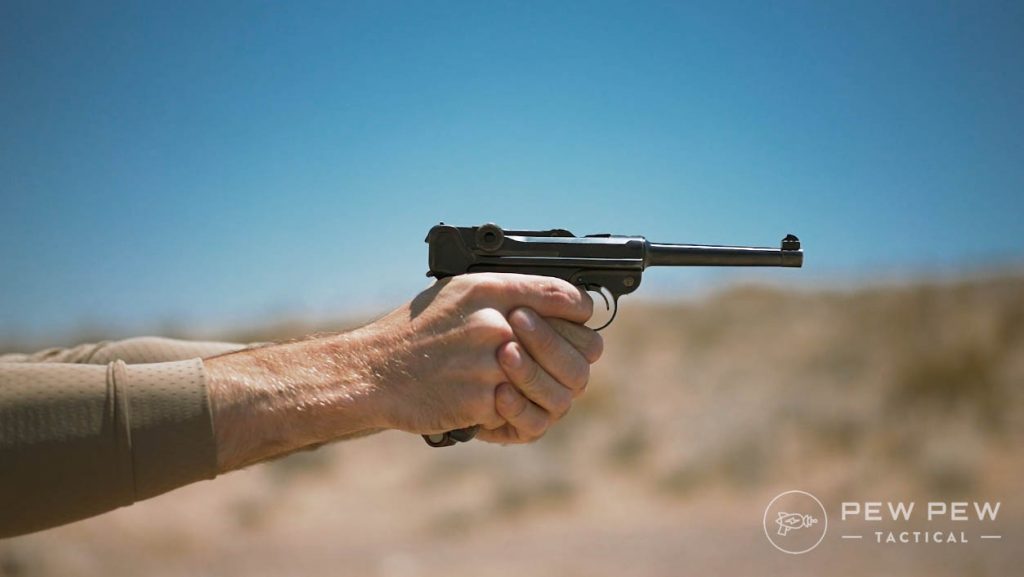
The gun’s distinctive toggle action represents a now-extinct branch of small arms development that’s quite unique operations-wise.
It was nothing short of revolutionary for the time — even if it wasn’t the first handgun to utilize it.
Prices accurate at time of writing
Prices accurate at time of writing
Taking the existing toggle-lock weirdness of the Borchardt C93, Georg Luger made small tweaks that eventually came to resemble the Luger we know and love today.
While the Borchardt was generally regarded as accurate with a high rate of fire, it was also unwieldy and expensive to produce.
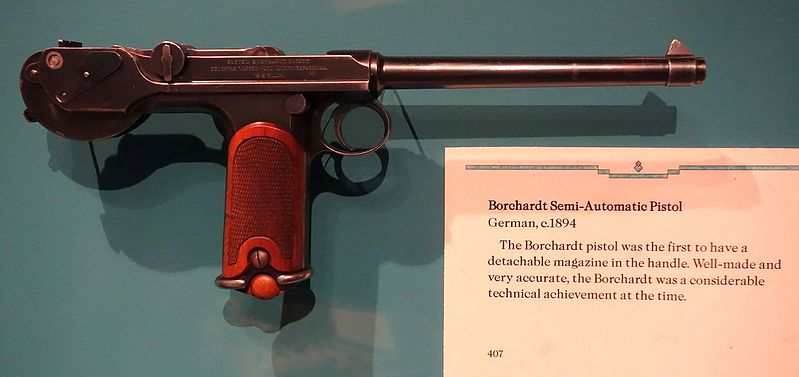
After Borchardt refused to modify the design to address concerns raised by the Swiss Army during their initial trial phases, German arms manufacturer Deutsche Waffen und Munitionsfabriken or DWM for short, hired Georg Luger to implement the suggested tweaks.
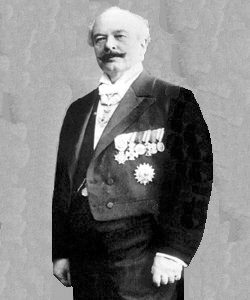
Notably, the Borchardt featured some pretty unexpectedly powerful recoil.
Attempting to address this, Luger created the 7.65×23 cartridge – or .30 Luger as we know it here in the States.
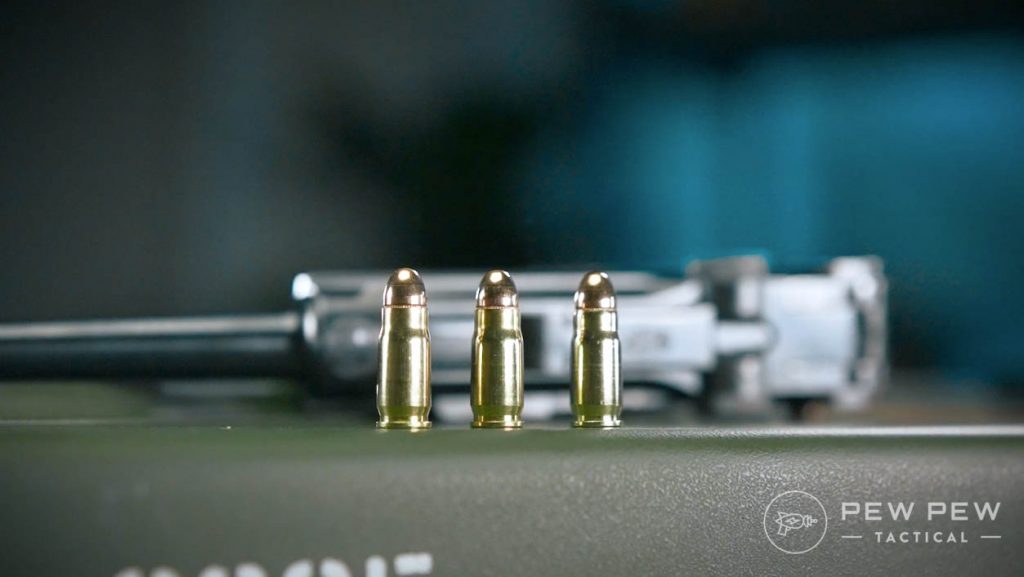
Utilizing a different powder charge and shaving a whole 2mm off the Borchardt cartridge allowed the gun to opt for a shorter stroke of the toggle action. Additionally, it granted a narrower, more angular grip as compared to the Borchardt’s near-vertical pistol grip.
The changes would indeed pay off.

After aggressively pursuing military contracts for the new and improved design, the Swiss became the first military to adopt it in 1900.
For even more history on this design, check out our historical dive into the Luger.
Toggle Lock System
The most distinctive feature of the Luger, the toggle lock system operates in a manner that’s not too dissimilar from that of a human knee.
When locked out and straight, it remains quite secure and sturdy. But when bent, it becomes increasingly easy to continue bending around that joint.
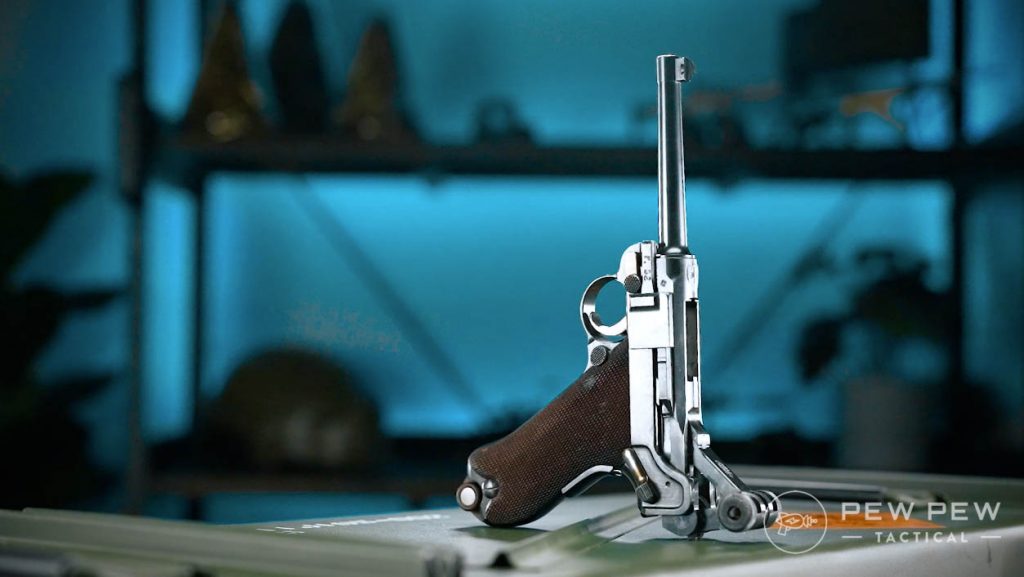
The toggle joint in its straight position resists the directional force of the detonating cartridge. This allows the entire breech, barrel, and toggle to move to the rear on the rails for about half an inch.
It’s there that the toggle begins to ride up on a pair of cams that “breaks” the toggle and induces that jointed bending motion. This permits the bolt to come rearward and the striker to be cocked.
The spent cartridge is extracted by a combination extractor/loaded chamber indicator on the top of the toggle. It’s then ejected as the toggle nears the end of its rearward travel.
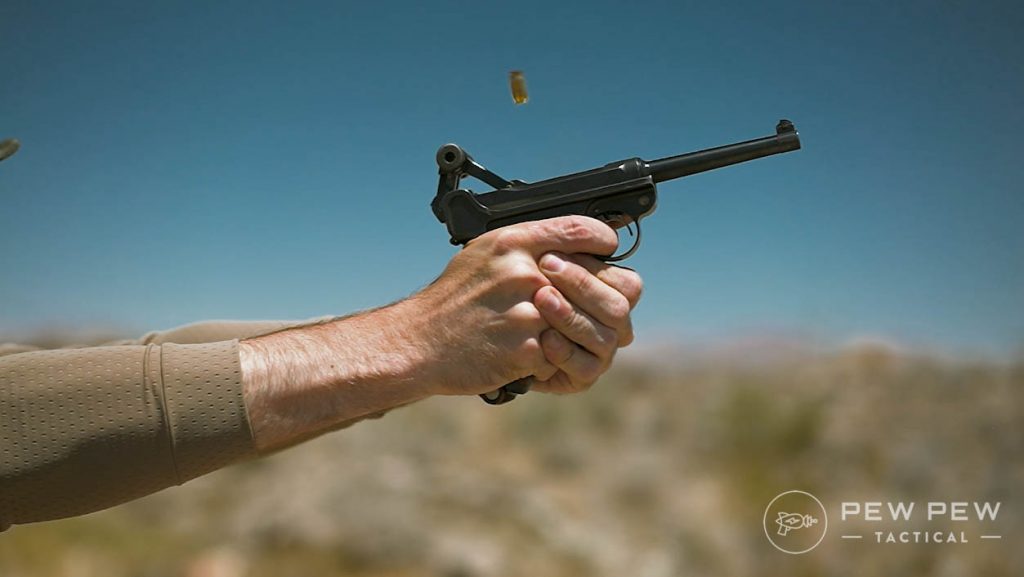
A new round is then stripped from the magazine and chambered as the toggle is driven back to the straight position by a spring.
And if you’re following along thinking that all sounds particularly complex, you’re spot on.

The Luger was regarded as complicated even for the time, requiring quite a bit of precision hand-fitting to manufacture and tight tolerances between parts.
In other words, very stereotypically German.
The Luger: Front to Back
The particular example that we tested is a 1906 DWM-produced Swiss military contract model.
It features the distinctive flowery DWM logo stamped on the toggle and a Swiss military crest just forward of that on the chamber.
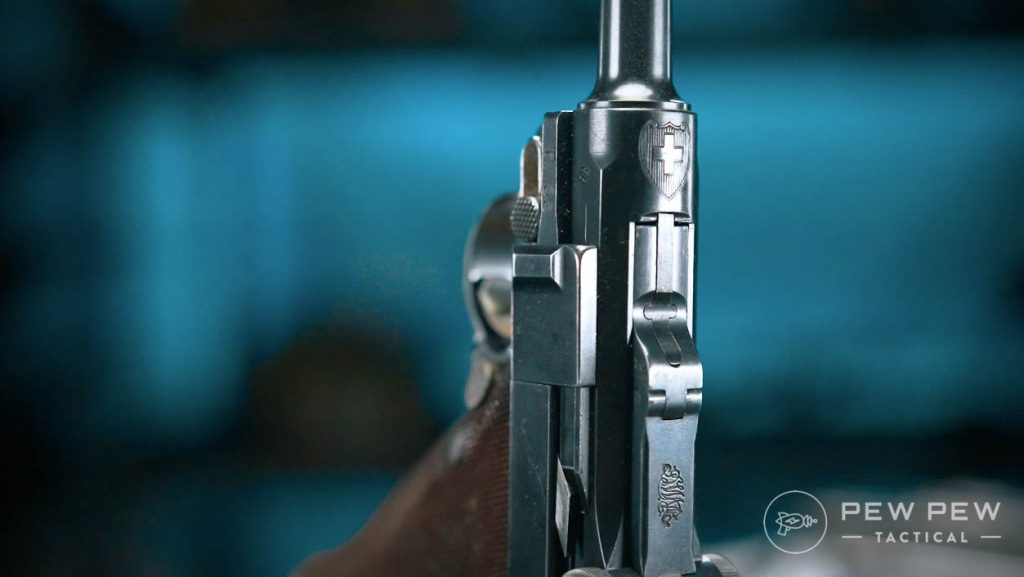
From front to back, the Luger sports a 4.75-inch barrel with a rather tall bladed front sight on top.
As mentioned, the entire barrel assembly reciprocates rearward ever so slightly when fired, riding inside of the frame’s rails.
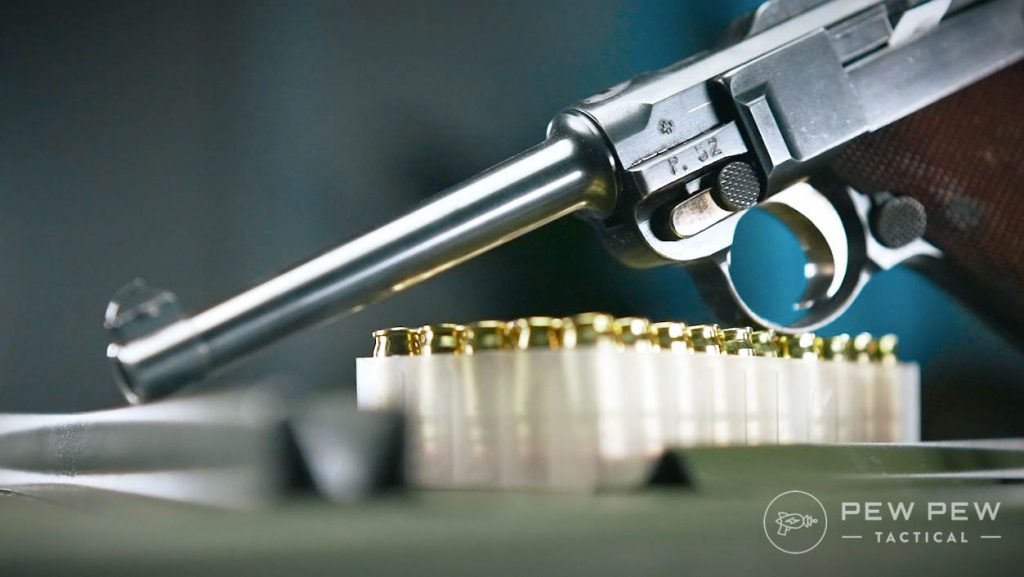
Right under the space where the frame and barrel assembly meet sits a small, intricately knurled takedown lever. Just below that, we’ve got our odd-looking trigger guard.
Aft of that rests the magazine release — again with some complicated knurling for a more positive grip.
Behind that sits a gorgeous pair of original checkered walnut grips.
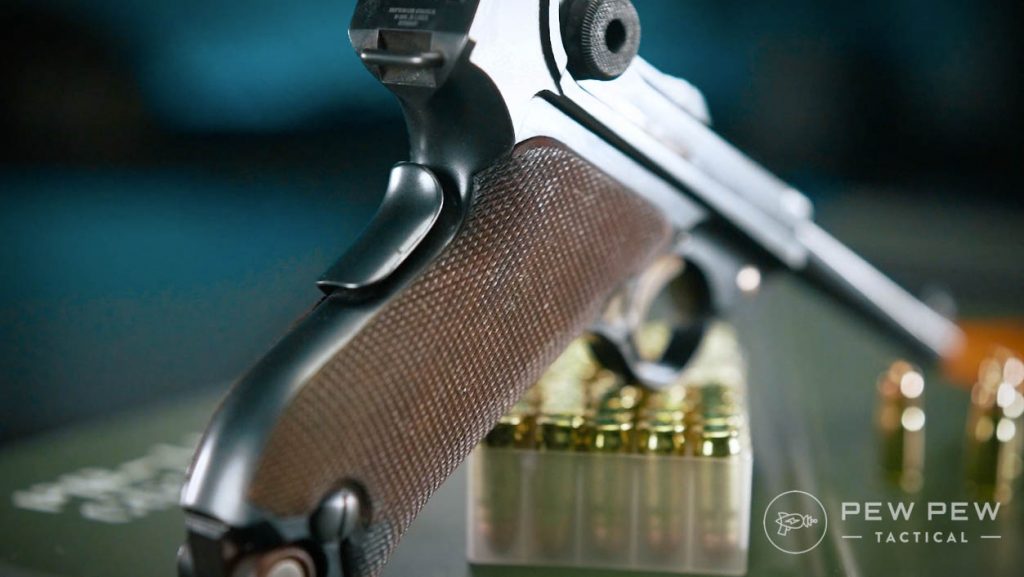
The magwell seems very narrow, while the 8-round magazine features a spring-loaded button that depresses the follower to facilitate easier loading.
It also comes with a wooden base plate with two small circular button things for grasping when inserting or removing the mag.
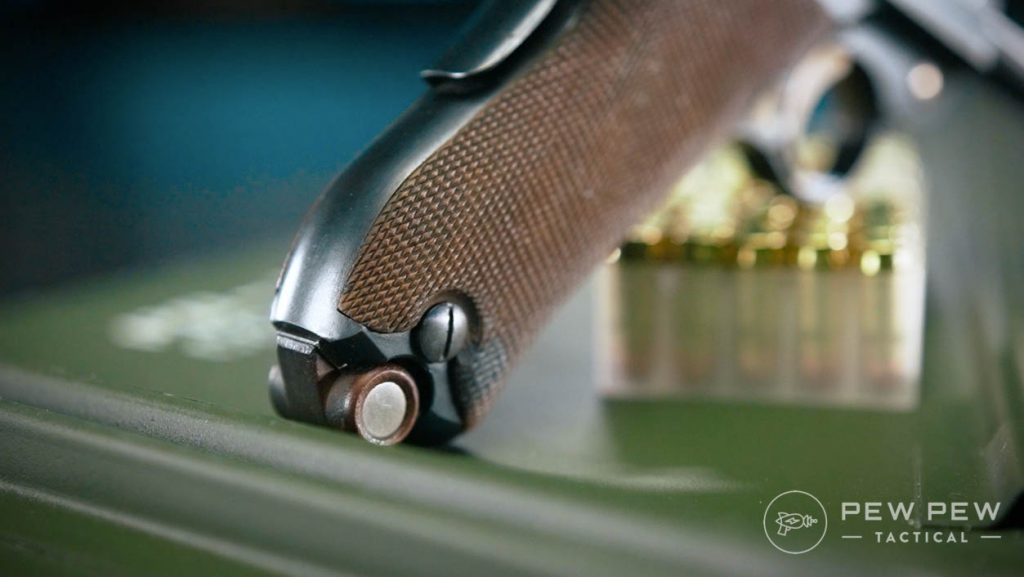
A grip safety at the rear disables operation of the trigger unless depressed, with an additional manual safety lever sitting just above it.
The toggle can be manipulated via the two enormous grabby donut things at the top.
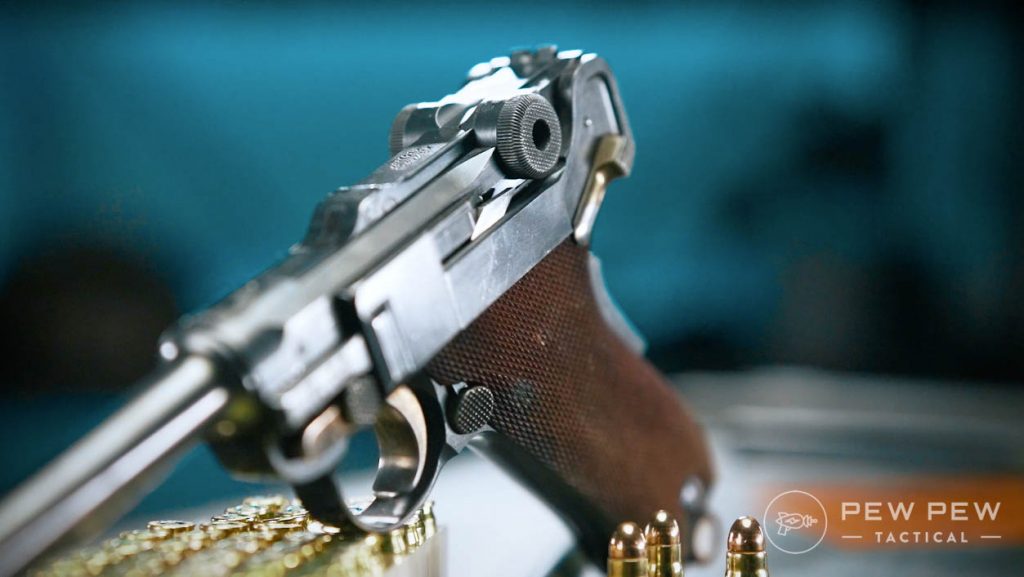
And lastly, a small bar loop is provided for lanyards at the rearmost part of the gun.

Shooting Experience
Curious just how century-old handgun tech handles?
We were, too, so we tracked down a few boxes of .30 Luger to find out.
First impressions are…weirdly good!
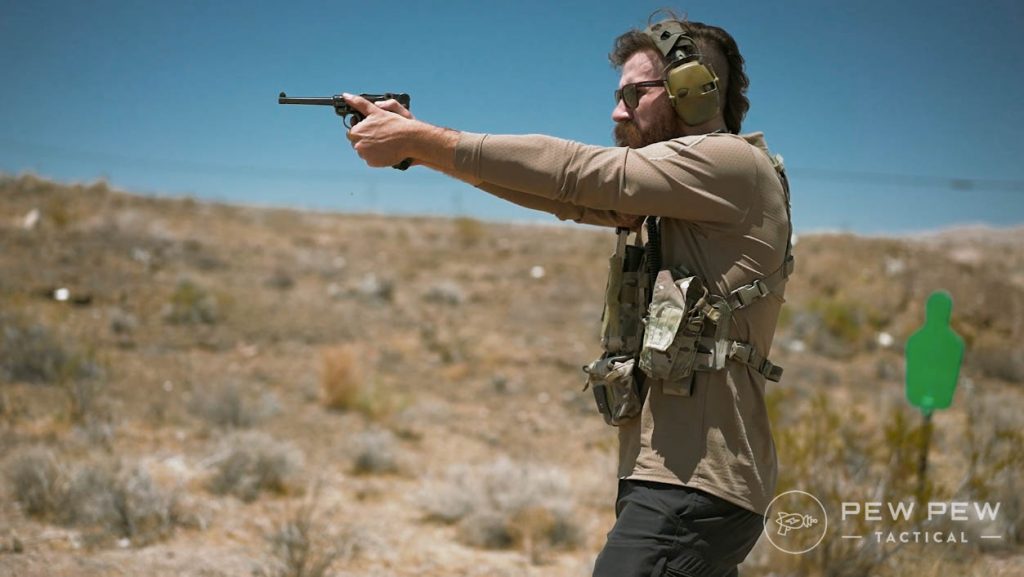
Right off the bat, the gun points very naturally. I’d imagine that comes courtesy of the general grip shape and that most of the gun’s weight winds up near the rear.
If you’re already used to the muscle memory associated with modern handguns, the transition here might be a bit jarring.

But oddly enough, you get a kinda high and thumbs forward grip on the thing if you’re intent on doing so.
That’s definitely not the case with most vintage Browning-style sidearms from the era.
The gun’s trigger feels…well, it’s difficult to describe.

A modern trigger generally features take-up, the wall, a break, and then a reset.
Meanwhile, the Luger’s trigger has a few millimeters of take-up and then a more or less consistent amount of resistance the entire way back until a very not-obvious breaking point.
The reset is similarly subtle, generating a very light click you’re probably going to miss unless you’re paying attention to it.
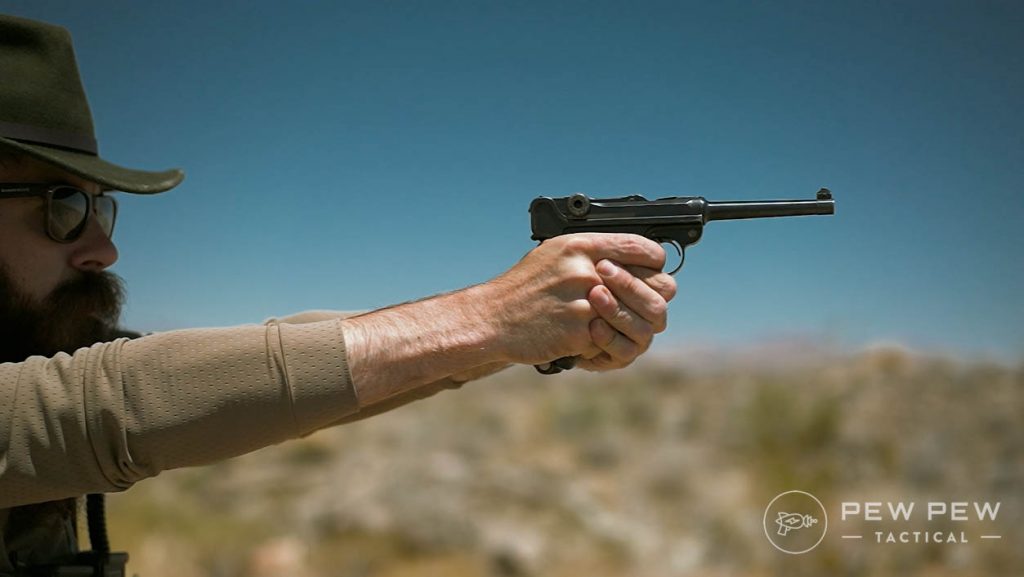
That said, these aren’t criticisms, as the gun still feels super smooth — especially when you pause to consider just how antiquated the design is.
However, the magazines offer an altogether different story.
Our original magazine worked well enough, though a bit finicky when loaded to full 8-round capacity. But our backup reproduction Mecgar magazine proved nothing short of terrible.
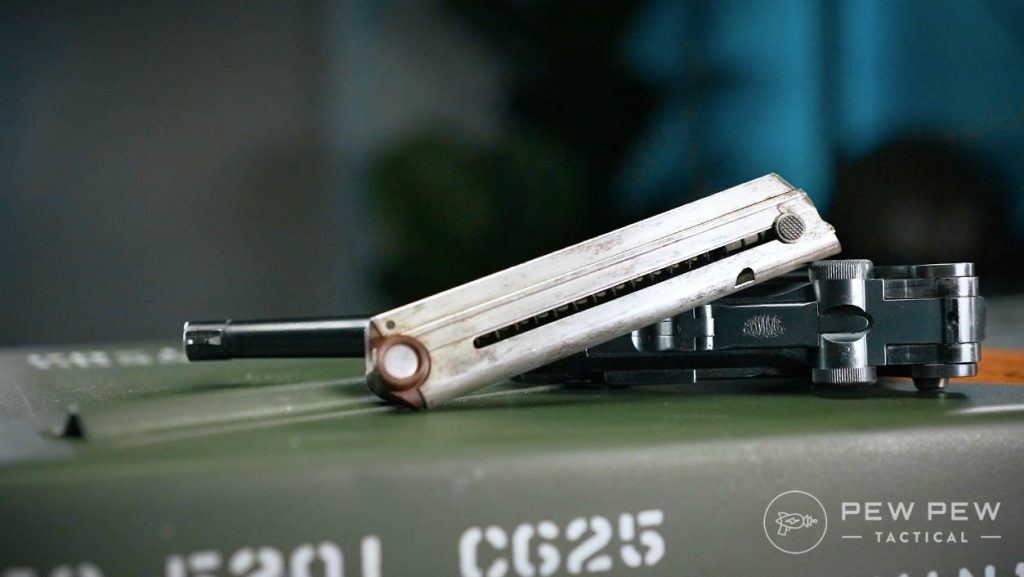
It refused to function with more than six rounds or so in the mag. Of those six rounds, only a few fed correctly before the follower got stuck. Bummer.
Again, I’m fully aware that it’s a bit silly to evaluate antiques by any sort of modern standards.
But, hot damn, reloads are a pain when you need to get mags this small into a magazine well that’s barely larger.
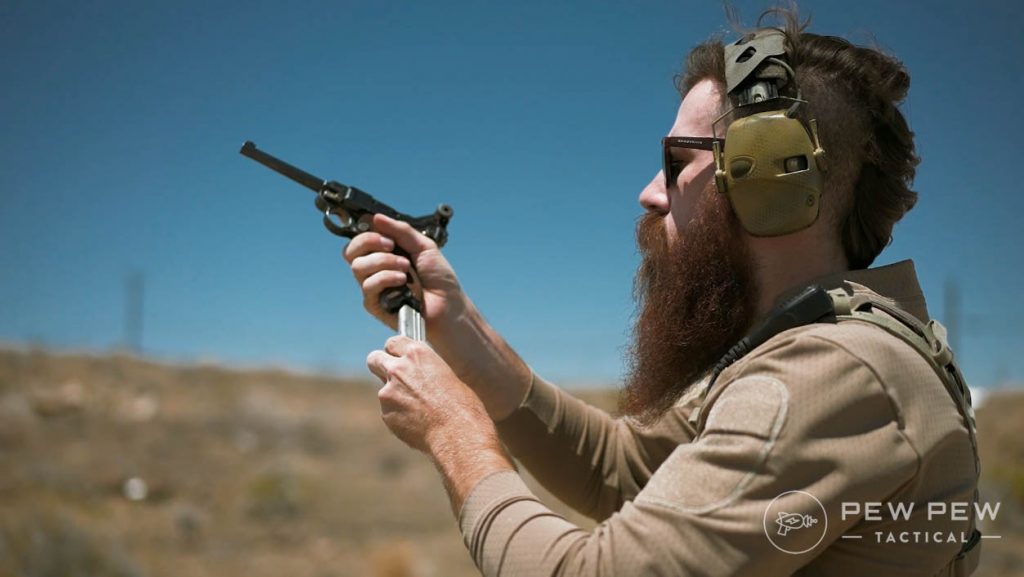
Designing an integral piece of the gun’s operation around millimeters of clearance – not forgetting that mag reloads often happen under duress – doesn’t quite make sense.
But again, German design…overcomplicated…you get my point.
While we’re on things that don’t quite make sense, the rear sights are part of the gun’s toggle.
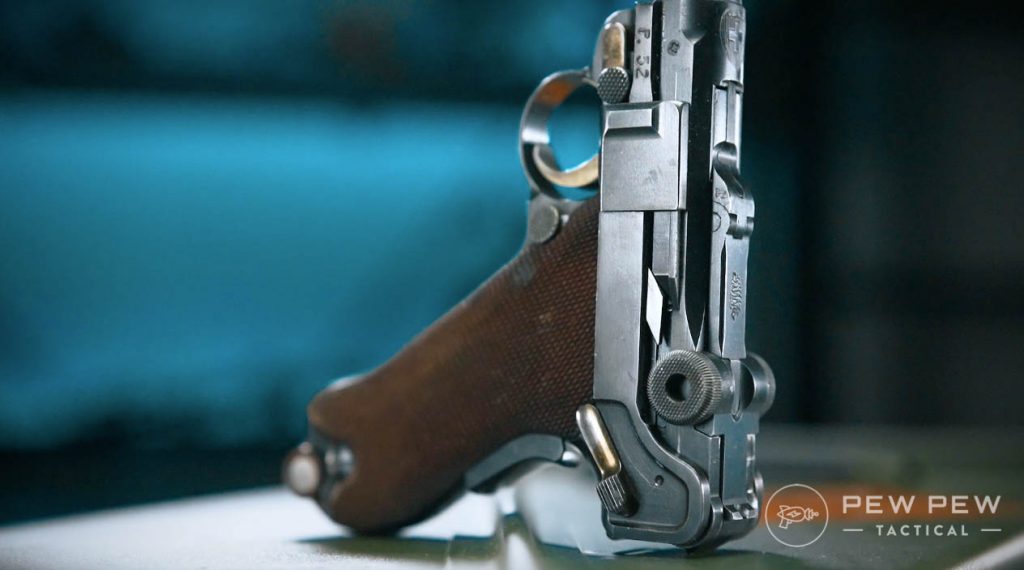
This means that when fired, you momentarily lose your entire sight picture as the toggle breaks at its joint, and your rear sights briefly point skywards.
Now, it’s not too big of a deal.
Plus, I think you could argue that it’s not dissimilar from the quick realignment that happens when shooting a slide-action pistol. But, it is one of those things you need to get used to.
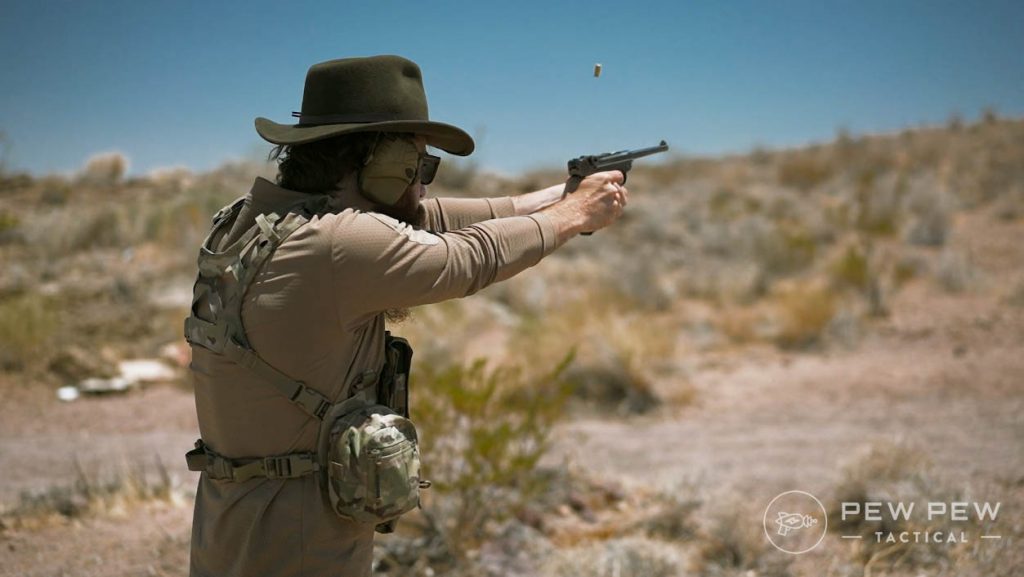
The Luger fires the .30 Luger round, which is a fairly small caliber.
And let’s not forget, the .30 Luger resulted in the creation of the 9mm Parabellum as we know it.
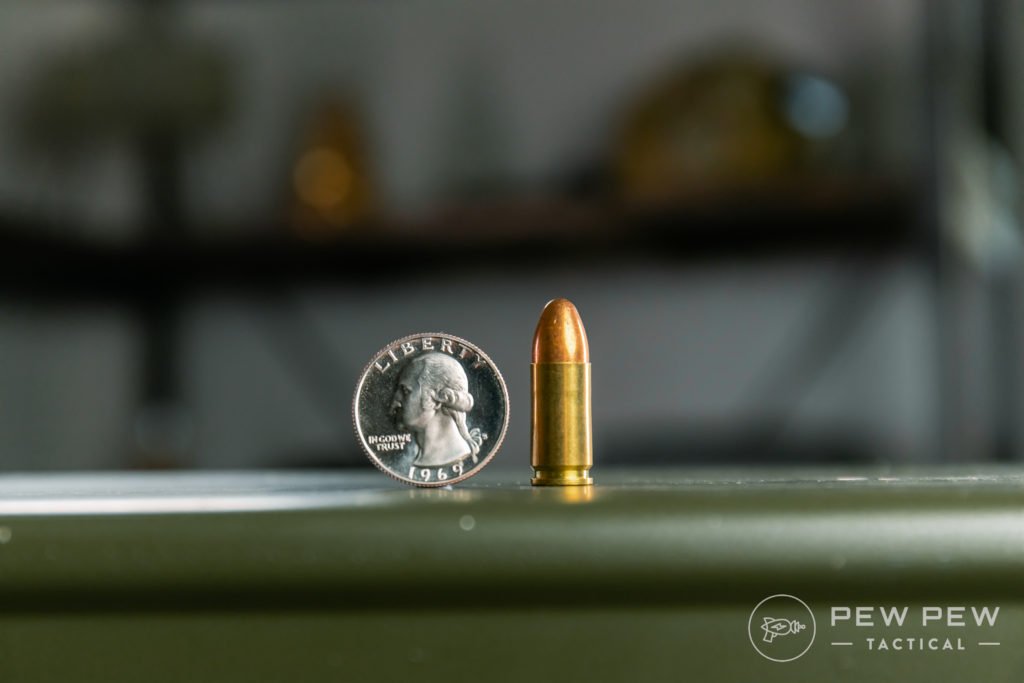
Altogether, it feels a bit softer than normal 9mm. The .30 Luger is a really fun plinking round…if you’re not worried about storming the trenches with it.
That said, be sure to take extra care and watch where your ammo ends up if you happen to shoot both .30 Luger and normal 9mm firearms.
Why do I mention that?
Because we almost ended up loading a Luger round into one of our Glock mags.
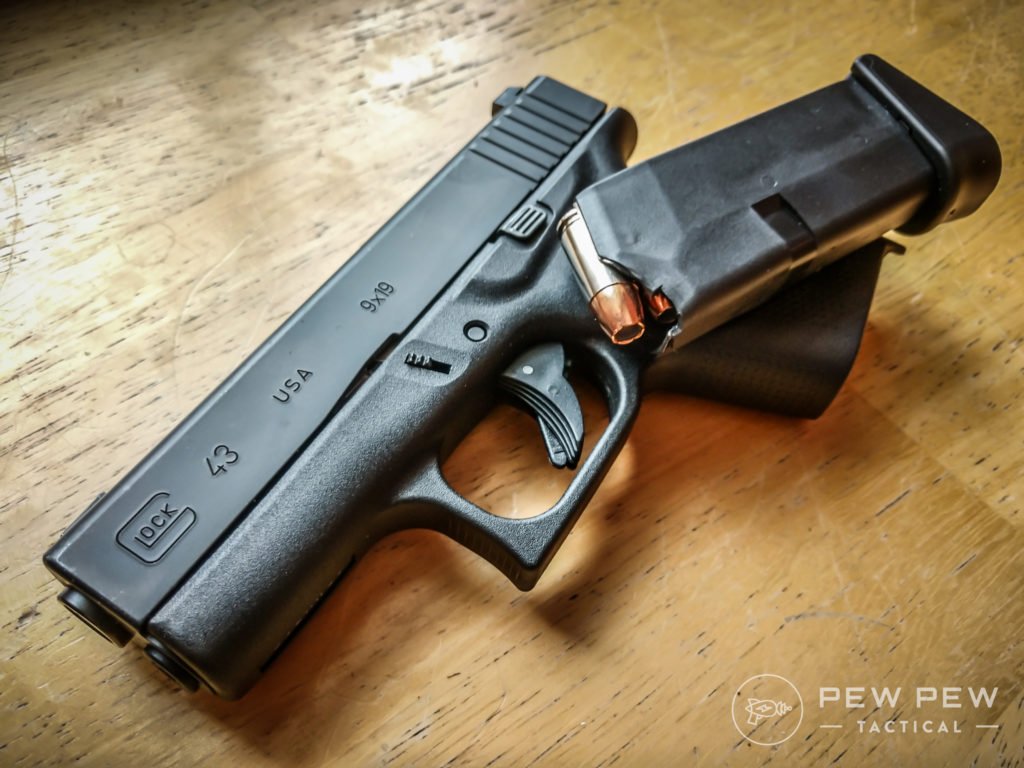
And that mag accepted the .30 Luger with no issues. We have no idea what would happen if we hadn’t caught that slip, and we have no intention of finding out.
Once acclimated to the Luger’s quirks, I found myself feeling reasonably comfortable with it — running our plate rack with ease and handling longer-range shots on steel torsos with slightly less success.

While staying focused on the front sight blade seemed to work great for running the rack, it felt like I couldn’t quite figure out my POI past 30-yards.
I’m entirely willing to bet that’s my fault in one way or another, but it felt relevant to bring up.
Also, worth mentioning, the toggle action takes a decent amount of force to operate.
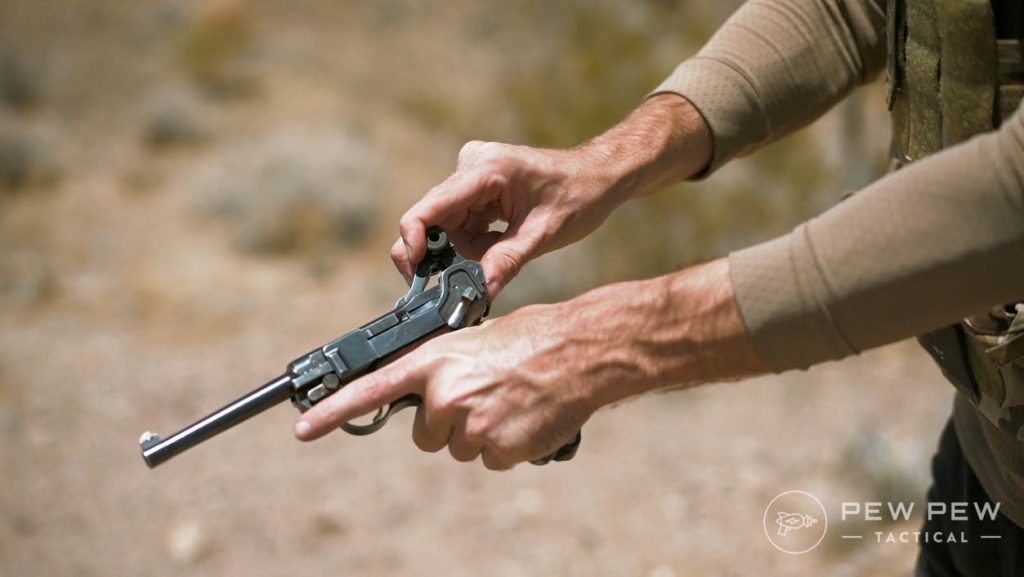
While you might think you’ve driven it back far enough to chamber a round, you’ve got to make sure you’re muscling the toggle back to its rearmost point of travel.
And that’s usually just a tiny bit past where you might think that is.
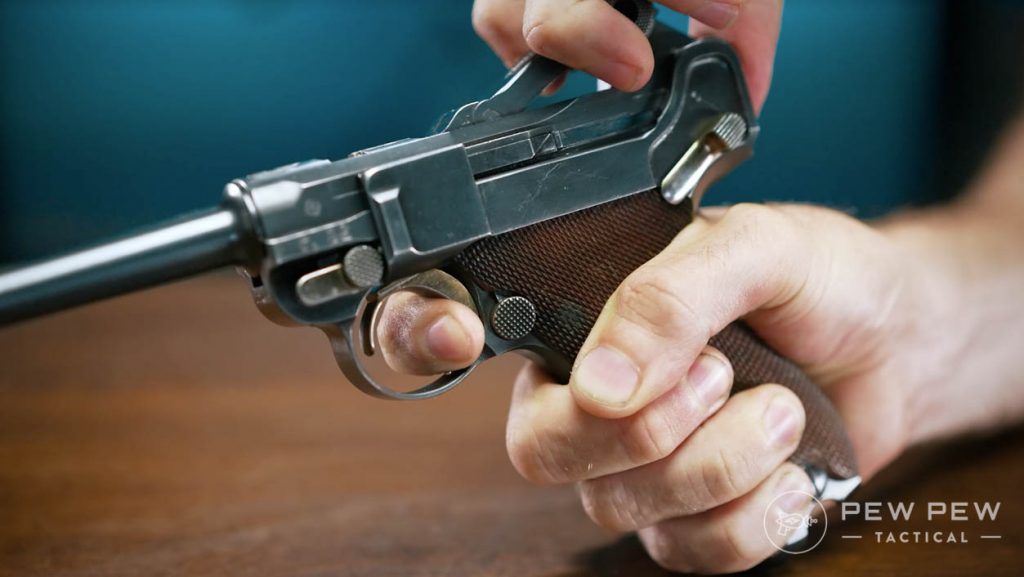
Conclusion
I don’t know if we can say it enough, but the Luger is one cool piece of history. Boasting a truly German design, this pistol resonates with anyone that calls themself a history buff.
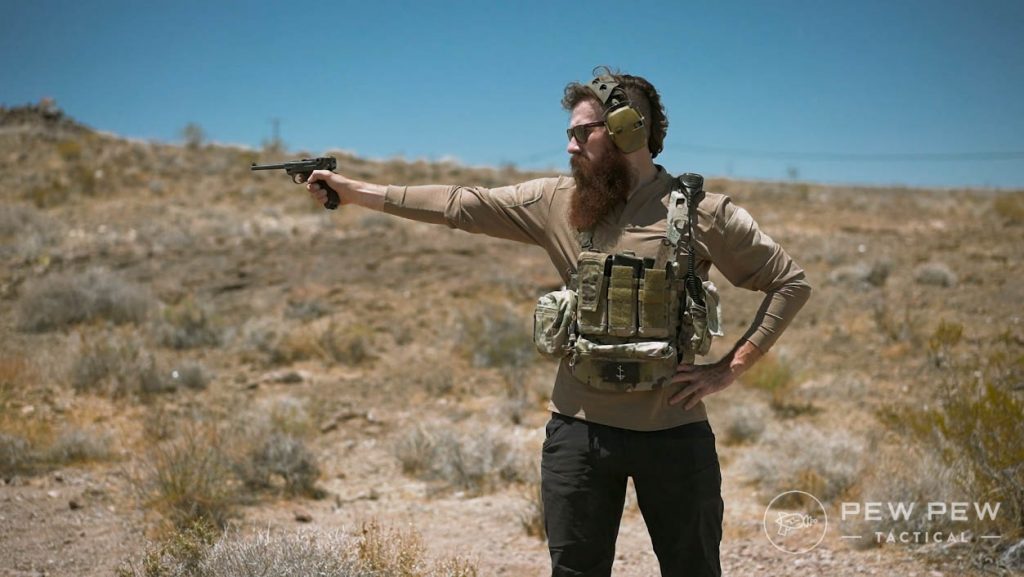
And, from the perspective of someone who’s a bit of a history nerd, there’s something undeniably neat about getting firsthand experience with a firearm that kinda shaped the modern world as we know it.
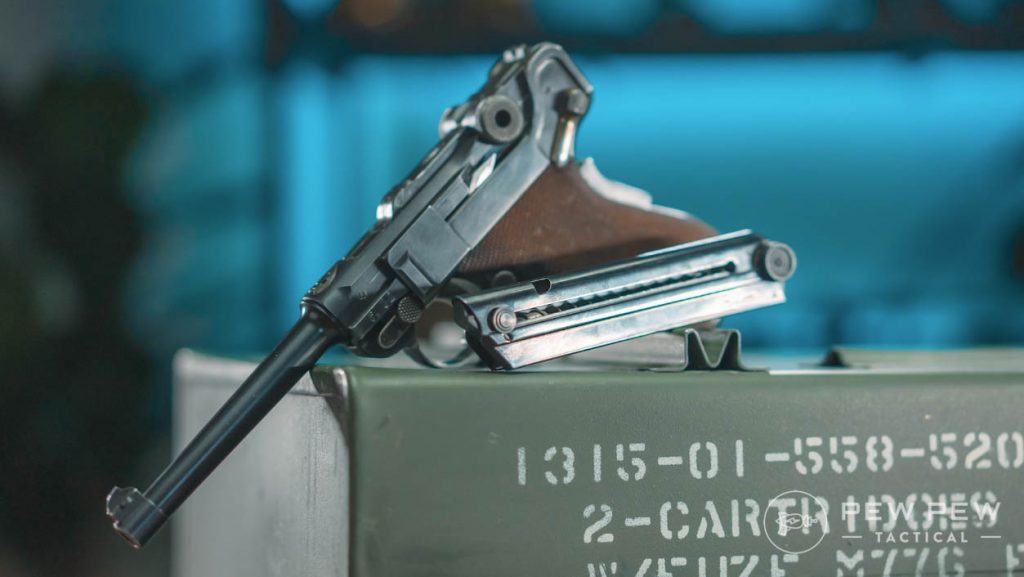
While you can find ratty Lugers at okay prices, it pays to save up and get a decent model – especially if you’re a collector.
Prices accurate at time of writing
Prices accurate at time of writing
Overall, I had a blast with this Luger, and I highly recommend at least firing one at some point in your life.
Want to watch the Luger in action, check out the full video below.
What do you think about the Luger? Let us know in the comments below. Read up on the Luger’s history, in our in-depth look into its background and see other historical guns you can own in the Coolest Guns from WWII (That You Can Still Buy).
The post [Video+Review] Swiss Luger 1906: Engineering Marvel? appeared first on Pew Pew Tactical.
